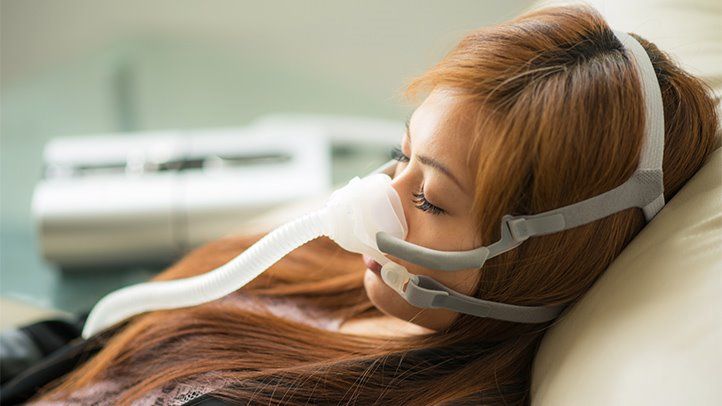Introduction
Sleep apnea is a common yet underdiagnosed condition affecting millions worldwide. If left untreated, this disorder can lead to severe health complications. Luckily, advancements in modern healthcare have led to effective treatment options like Continuous Positive Airway Pressure (CPAP) therapy. This guide unveils the science, benefits, and techniques to optimize this therapy for individuals battling sleep apnea.
Understanding Sleep Apnea
Before diving into CPAP therapy, it’s essential to grasp what sleep apnea entails, its symptoms, risks, and complications.
What is Sleep Apnea?
Sleep apnea is a sleep disorder characterized by frequent pauses in breathing or shallow breaths while you sleep. These interruptions can last a few seconds to minutes and often occur 5 to 30 times or more an hour. This results in poor sleep quality, leading to excessive daytime sleepiness and other health problems. For all your Sleep Apnea leads, check out Rockinghamcpap.com.au.
Symptoms and Risks
Common sleep apnea symptoms include:
- Loud snoring.
- Waking up with a dry mouth or sore throat.
- Headache in the morning.
- Difficulty staying asleep.
- Attention problems.
- Feeling excessively tired during the day.
Importantly, not everyone who snores has sleep apnea and not everyone with sleep apnea snores.
The risks associated with untreated sleep apnea are significant. They include high blood pressure, stroke, heart problems, diabetes, depression, worsening of ADHD, and accidents due to drowsiness. Therefore, seeking medical help is crucial if you suspect you might have this condition.
An Overview of CPAP Therapy
CPAP therapy is the leading treatment for sleep apnea. Here, we’ll discuss what it is, how it works, and the benefits it offers.
What is CPAP Therapy?
CPAP therapy involves a machine that delivers a steady stream of air through a hose connected to a mask worn over your nose or nose and mouth. This continuous air pressure helps keep your airway open while you sleep, effectively preventing the breathing interruptions characteristic of sleep apnea.
How Does CPAP Work?
The CPAP device comprises three main parts: a motor, a hose, and a mask. The engine acts as a compressor, drawing in room air, pressuring, and delivering it to the user. The hose connects the motor to the mask and is typically flexible to accommodate different sleep positions. The show, worn over the nose or the nose and mouth, delivers pressurized air into your airways.
Benefits of CPAP Therapy
The benefits of CPAP therapy are manifold. They include:
- Better Quality Sleep: By keeping your airways open, CPAP therapy eliminates
breathing pauses, allowing you to sleep better. This results in less daytime fatigue and increased energy levels.
- Improved Cardiovascular Health: Untreated sleep apnea can lead to heart problems like high blood pressure, heart attacks, and strokes. CPAP therapy can reduce these risks by managing your sleep apnea.
- Enhanced Mental Well-being: Poor sleep can lead to depression, irritability, and difficulty concentrating. CPAP therapy can significantly improve your mood and cognitive function by improving your sleep.
Optimizing Your CPAP Therapy
While CPAP is highly effective, it requires correct usage and maintenance. Let’s explore ways to get the most out of your CPAP therapy.
Getting Used to CPAP
Starting CPAP therapy can be challenging as you adjust to sleeping with the mask and handling the machine. Here are a few tips:
- Start Slowly: Consider using the CPAP machine for short periods while awake. This can help you get used to the mask’s feel and the air pressure’s sensation.
- Use the Ramp Feature: Most CPAP machines have a “ramp” feature that gradually increases the air pressure over time instead of delivering full force immediately. This can make falling asleep more comfortable.
- Ensure a Proper Mask Fit: A poorly fitting mask can cause discomfort and leaks. Work with your healthcare provider to find a cover that fits you well and suits your needs.
Maintaining Your CPAP Machine
Regular cleaning and maintenance of your CPAP machine are crucial for optimal performance and longevity. It also helps prevent infections from bacteria and mould. Follow the manufacturer’s instructions for cleaning, and replace parts as recommended.
Lifestyle Changes
Alongside CPAP therapy, certain lifestyle modifications can help manage sleep apnea:
- Maintain a Healthy Weight: Obesity is a risk factor for sleep apnea. If you’re overweight, losing weight can help alleviate symptoms.
- Avoid Alcohol and Sedatives: These substances can relax the muscles in your throat, worsening sleep apnea.
- Quit Smoking: Smoking can inflame and block your airways, exacerbating sleep apnea.
Click here – Unleash Your Inner Photographer: Exploring Photography Studios in Sydney
Conclusion
Sleep apnea is a severe condition, but with effective treatments like CPAP therapy, it doesn’t have to disrupt your life. Understanding and properly utilizing CPAP therapy can be a game-changer, offering profound benefits to your sleep quality and overall health. Remember, if you have any concerns or issues with your therapy, always consult your healthcare provider. With the proper knowledge, support, and patience, you can achieve great strides in managing sleep apnea and reclaiming a good night’s sleep.
